
By:
- Kritin Karkare
Published Date
By:
- Kritin Karkare
Share This:
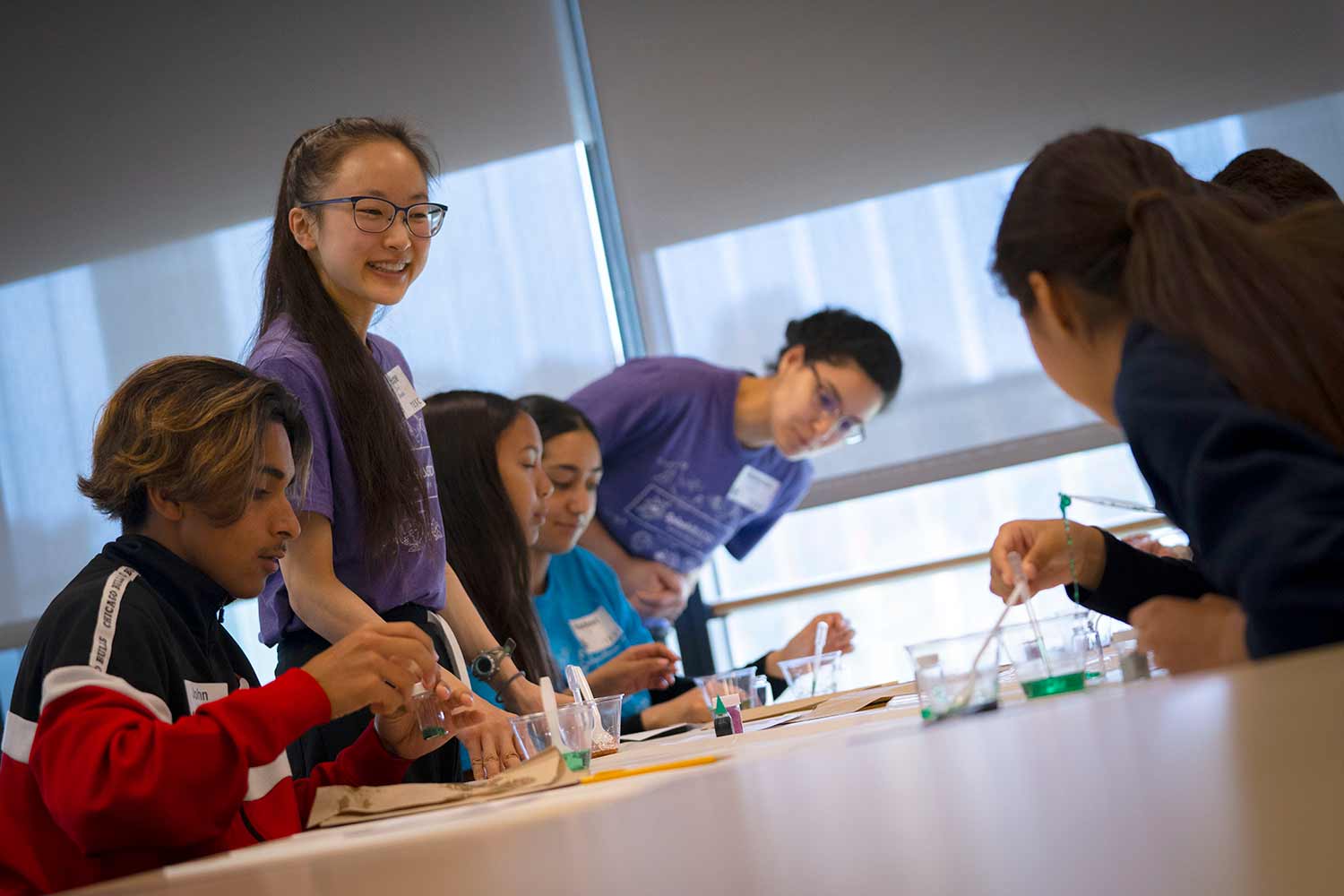
Bioengineering students Hope Leng and Rebecca Kandell, in purple shirts, lead high school students through the Tissue Engineering 101 class they created, including making sodium alginate beads. Photos and video by Matthew Tang.
Diving In To Teaching at Splash
Data Analysis with Mario Kart. Learning Rhetoric through The Office. Having Fun with Kitchen Chemistry.
If you were a high school student and these were the kind of topics you could learn about for a day, what would you take? More than 300 high school students came to UC San Diego on Saturday to sample some of these offerings at Splash, a daylong event run by the Triton Engineering Student Council (TESC). The event allows high school students to take fun classes ranging from ancient Greek philosophy to the mathematics of credit card security.
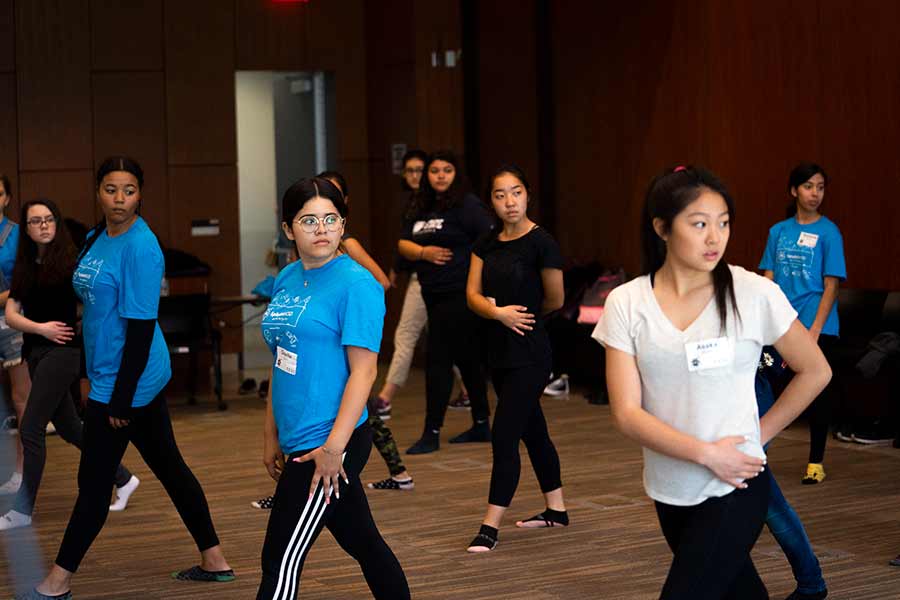
Splash was organized by the Triton Engineering Student Council, but included courses like Intro to Contemporary Dance, taught by physiology and neuroscience student Amanda Rhee.
Here’s the best part: their teachers were UC San Diego’s own undergraduate and graduate students. This year, more than 60 students plus several faculty members volunteered to create and teach a course of their choice.
Originally started at MIT, Splash is a unique opportunity for undergraduate and graduate students to design and teach their own short courses for high school students. It's a concept that appealed to Benjamin Cosman, a computer science Ph.D. student who enjoyed creating his own class curriculum at a Splash event so much that he was inspired to bring it here to UC San Diego in 2016. Splash at UC San Diego has grown from 150 students to well over 300 this year.
While the event may be run by TESC—the Jacobs School of Engineering’s student engineering organization—Splash also features classes in the arts, humanities, and economics, making it a truly interdisciplinary day. With more than 60 classes to choose from and seven class slots throughout the day, high school students packed their day to the brim with topics they enjoy. Like…
Fun with Kitchen Chemistry
Maya Holay, a nanoengineering Ph.D. student, and Mallory Evanoff, a chemical biology Ph.D. student, transformed their designated classroom into a kitchen, with fruity and sweet aromas enticing their students as they mixed together concoctions like instant ice cream and meringues.
The catch? It’s not a cooking class. Holay and Evanoff were teaching chemistry principles under the guise of sweet treats, highlighting how science plays a role in even the most routine daily activities, such as cooking.
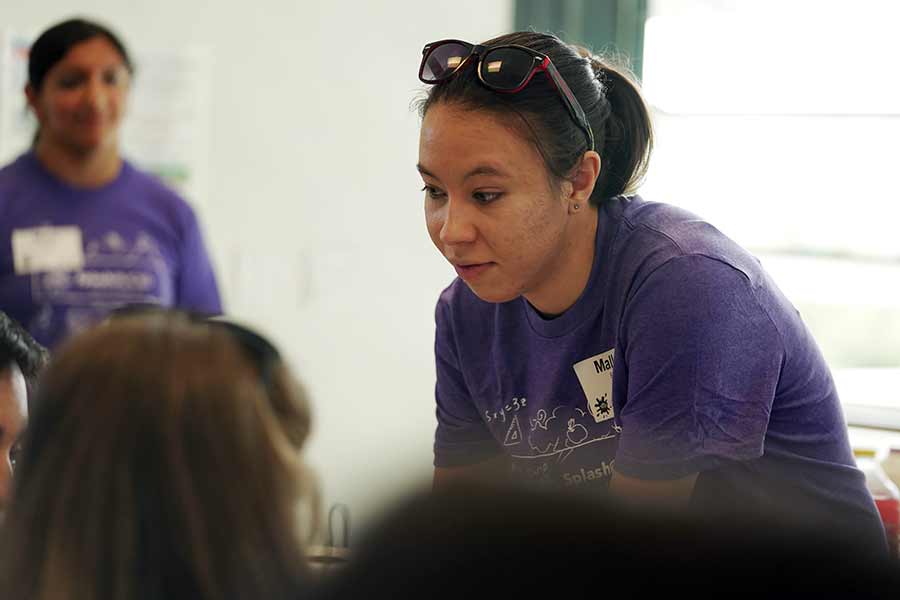
Mallory Evanoff, a chemical biology student, used cooking to teach students about chemistry.
“We made instant ice cream with rock salts to cool it down faster, and Nutella powder by mixing the Nutella with maltodextrine to transform a solid to a powder,” Evanoff said. “Plus we made boba like you’d get in a fro-yo shop to illustrate the properties of sugars as structures instead of sweeteners, and meringue to talk about proteins.”
Evanoff and Holay were inspired to teach the class in part by famed chef Alton Brown who also shared the science behind cooking. They also enjoy teaching and rekindling the fun of science in older students.
“I know a lot of times when we’re young, we’re very excited about science, but we kind of lose that through middle school and high school, so reinvigorating that excitement for science and passion for understanding is exciting to see in students,” Holay said.
Tissue Engineering 101
Careful! Don’t eat these beads. Unlike the tasty treats students could make in the kitchen chemistry class, these hydrogel beads are not meant to be eaten—they’re a tool to teach students about tissue engineering.
A group of five engineering students from Professor Ester Kwon’s bioengineering lab set out to create a class to inspire the next generation of bioengineers.
“We were interested in developing an outreach program and wanted to have a demo that was interactive to inspire the students to get them excited about STEM.” said Julia Kudryashev, a bioengineering Ph.D. student.
The interactive demo came in the form of sodium alginate beads. When sodium alginate solution is poured into calcium chloride, the calcium causes the alginate to entangle water and form squishy beads that eventually mesh together to make a gel akin to Jell-O. Students could also experiment with making different size beads, the time of bead creation and their squishiness after they are taken out of their solution. At the end of the day, they could take home their new creation.
These beads are applicable to real tissue engineering as well, because alginate is used by engineers making scaffolds when producing actual human tissues.
“My favorite memory was seeing all the kids getting excited about tissue engineering. They were especially excited about the applications of it, especially bioprinting. I think they use 3D printing in their classrooms, so that was an easy connection to make.” said Lauren Wagonner, a nanoengineering Ph.D. student.
“I really enjoyed seeing how students got excited about how things they’re learning in class have an impact on the world, and they can use that knowledge to solve real world problems,” said Alan Hurtado, a bioengineering undergraduate student who co-taught the class.
Iron Man is Soft
Newsflash: There’s a pretty major flaw in Iron Man’s suit.
“Iron is a material that’s actually really brittle and it is really susceptible to rust,” said Olivia Dippo, a materials science Ph.D. student and the mastermind behind this class. “So, you wouldn’t want to actually make Iron Man’s suit out of iron.”
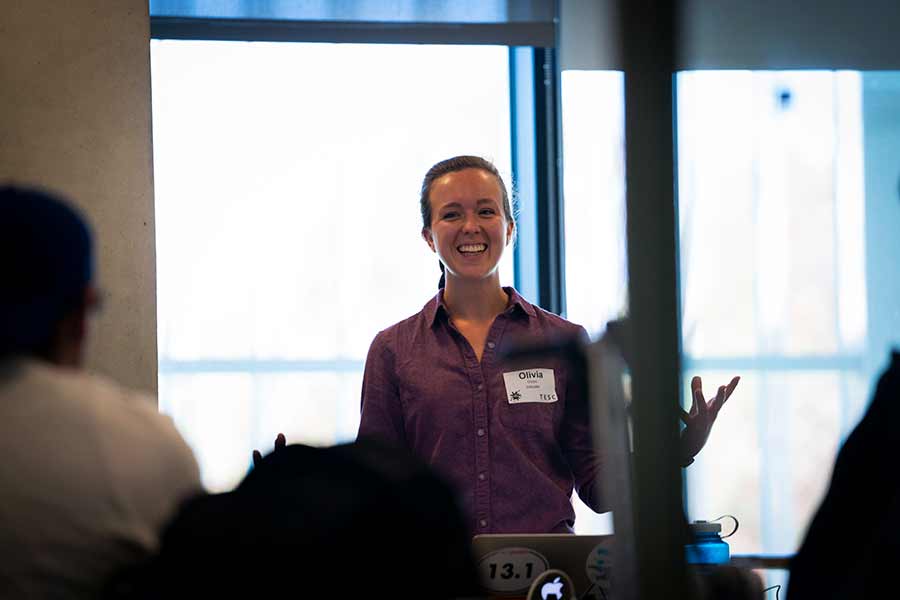
Materials science student Olivia Dippo’s class was “mostly about materials science in the world around us, and a little bit about superheroes,” she said.
Her class dove into the nuts and bolts of the strongest materials around the world, covering materials like steel and bronze. Not only that, but students learned about cutting-edge techniques used to make these materials stronger and more resistant to reacting with oxygen.
Dippo said the class was a rewarding way to talk about her love for material science and teach it to interested younger students.
“I wanted to sneak in materials science in a way the students would enjoy and find a way to surprise them” she said. It’s a class that she has taught for the past three years.
Win-Win
The high school students weren’t the only ones walking away with new knowledge after Splash. Those teaching the classes gained some valuable skills, too.
“Preparing a class for Splash helped us develop skills in communicating ideas to a young audience without any prior knowledge of the subject matter,” said Waggoner, who co-taught the Tissue Engineering course. “We introduced the technical advances in the field of tissue engineering with pop culture references and common technologies to allow students to draw parallels from familiar ideas to the new and exciting world of tissue engineering. Working on this class really gave us perspective on how to engage young students and get them excited about STEM and we will use the skills we learned from this experience to improve the accessibility of our future outreach projects.”
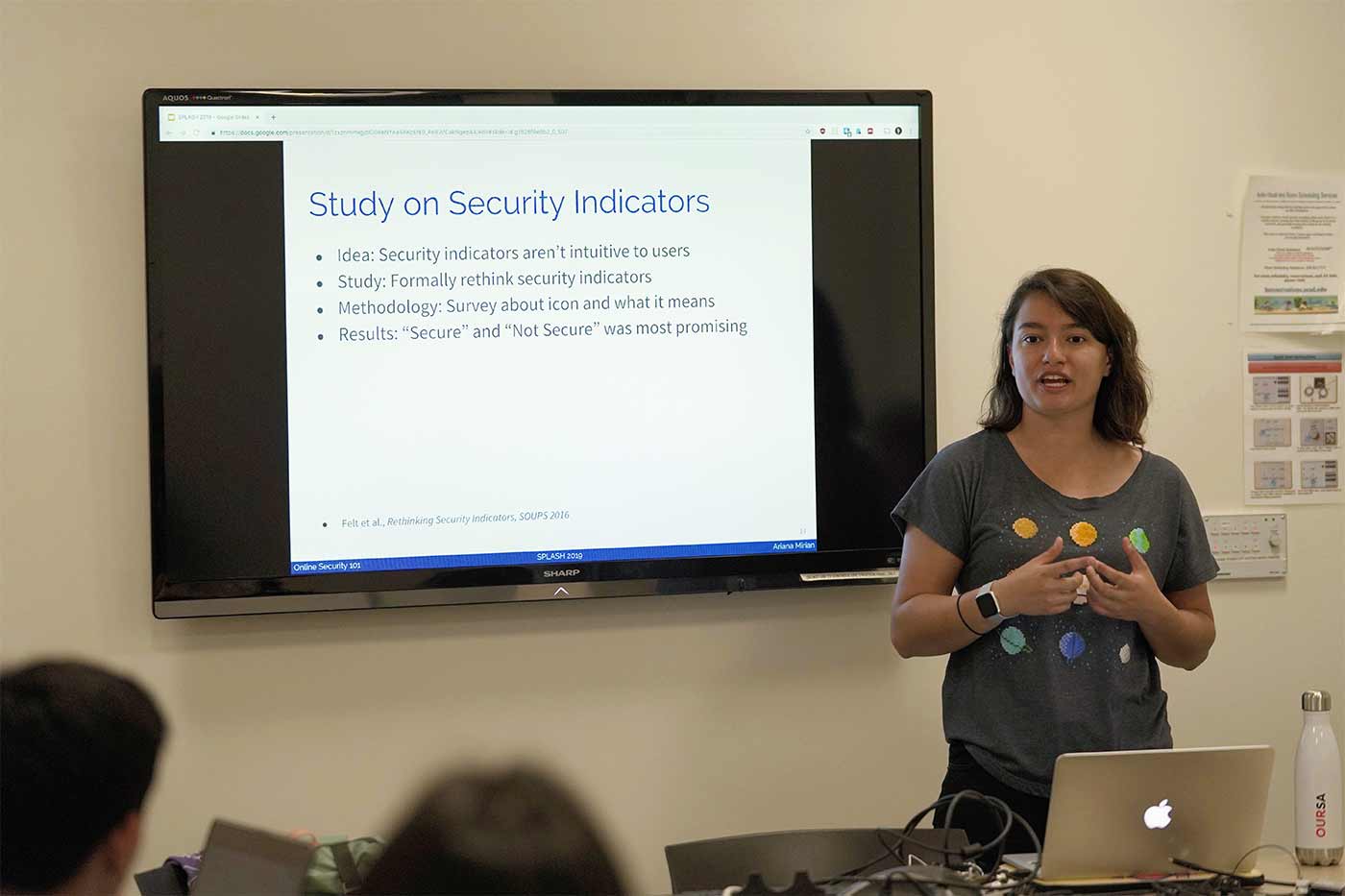
Ariana Mirian, a computer science student, shared best practices for protecting against security holes on the internet with students in her class.
Ariana Mirian, a computer science Ph.D. student who taught a class on Security for Today’s Day and Age, said designing and teaching a class for Splash helped her gain focus and clarity on the higher purpose of her research, which can sometimes be hard to see in the midst of daily details.
“Teaching a security class at Splash reminded me how to take a step back from my research to identify and communicate higher level principles to a room of non-security experts—in this case, high schoolers,” she said. “As a researcher, I often get so engrossed in my research that I forget the broader applications of security; to add to this, I am also usually in a room of other security researchers and practitioners. Taking a step back to create a digestible presentation for high schoolers is not only great communication practice but also a very humbling reminder of why I do the research I do every day—to keep users safe!”
Share This:
You May Also Like
Stay in the Know
Keep up with all the latest from UC San Diego. Subscribe to the newsletter today.


